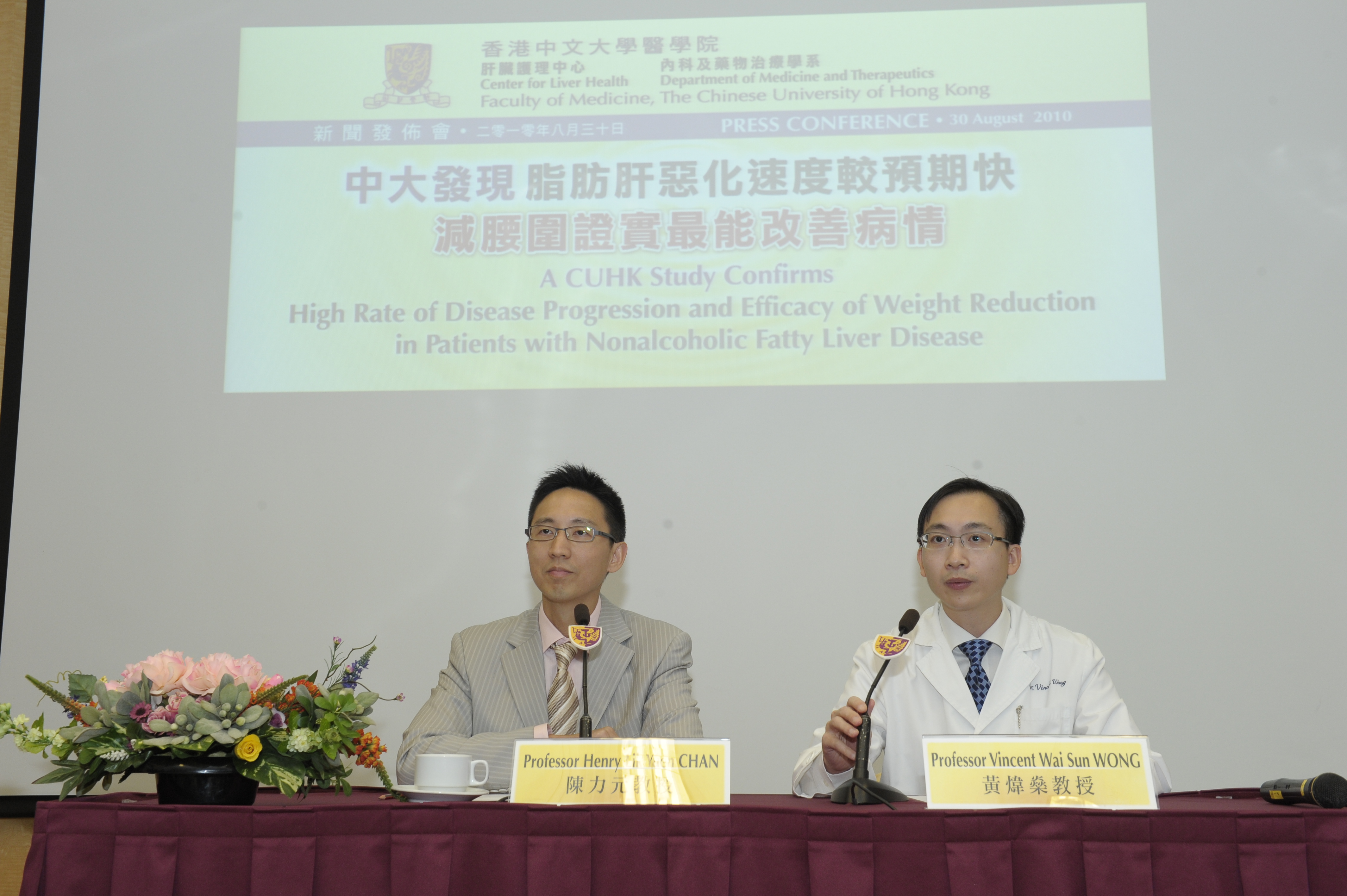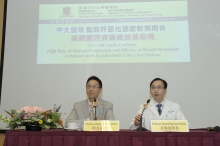CUHK
News Centre
A CUHK Study Confirms High Rate of Disease Progression and Efficacy of Weight Reduction in Patients with Nonalcoholic Fatty Liver Disease
Nonalcoholic fatty liver disease (NAFLD) is one of the most common chronic liver diseases worldwide. In Asia, 15% to 30% of the general population suffers from NAFLD. In affluent countries, NAFLD has already become the fifth leading cause of liver failure and liver cancer. These complications occur after a NAFLD patient has developed severe liver fibrosis or cirrhosis.
Disease progression is characterized by worsening of liver inflammation and fibrosis, or even development of cirrhosis. Most patients with NAFLD, including those with disease progression, are asymptomatic. Therefore, patients tend to ignore the disease until severe complications occur. For the same reason, the rate of disease progression in NAFLD patients remains unclear. To answer this important question, NAFLD patients have to undergo two or more liver biopsies at different time points. At present, such data remain scarce in the medical literature.
With this background, Department of Medicine and Therapeutics at The Chinese University of Hong Kong (CUHK) conducted a prospective studyfrom 2006-2009. Fifty-twoChinese patients with NAFLD underwent paired liver biopsies 3 years apart to assess disease progression. To find factors associated with disease progression, researchers investigated the changes in body weight and different laboratory parameters such as blood sugar and cholesterol.
At the time of recruitment, 39 patients had various degrees of liver inflammation, 25 had liver fibrosis, and 1 had liver cirrhosis. Threeyears later, 26 of the 52 patients had worsening liver inflammation, and 14 had worsening of liver fibrosis. Two of the patients even developed cirrhosis.
Weight reduction was the most important factor associated with improvement in the disease. 75% the of patients who have a reduction in waist circumference by 2 inches or more led to reduced or static liver inflammation and it could significantly reduce the risk of worsening liver fibrosis by six fold.
The study confirms that NAFLD is a progressive disease with a significant proportion of patients having worsening of liver inflammation and fibrosis with time. Modest weight reduction is effective in preventing disease progression. Therefore, the Faculty of Medicine at CUHK recommends regular assessment and lifestyle modification in all NAFLD patients.
(From Left)Professor Henry Lik Yuen CHAN, Director, Center for Liver Health, Faculty of Medicine, CUHK and Dr. Vincent Wai Sun WONG, Associate Professor, Department of Medicine & Therapeutics, Faculty of Medicine, CUHK







